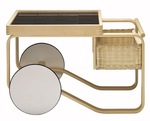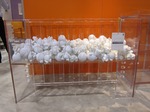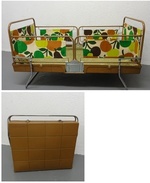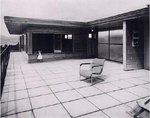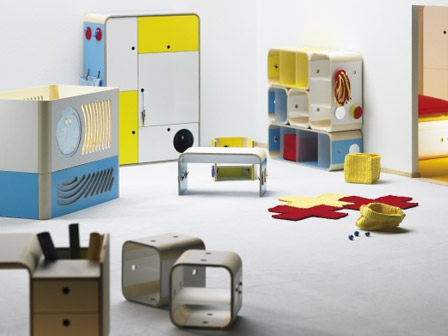
Now I love me some modernist, modular, flexible kids furniture. But I also love me some info, such as when I should be putting a hold on my ducduc order and checking the Swiss franc conversion rate and when a collection of nursery furniture is someone's thesis project for design school.
Carmela Niederhauser's and Nadine Grau's Ilo [spelled eye-ell-oh, btw] series is the latter. The duo at the Fachhochschule Northwest Switzerland in Aarau designed the system to be easy to assemble, with panels that attach to standardized, iconic rounded corner brackets. It's easy to add to and reconfigure over the years as your kid grows.
If it existed, that is. After shelving my search for the discontinued Palaset cube modules for the kids' room, I'm starting to feel a bit ambivalent about this whole purported long lifecycle of kids furniture and the idea of locking into a single source or system for furniture before the kid's even born. I mean, I definitely wish Via Toy Box and P'kolino and the like a long, profitable existence, but realistically, how will you know if they'll be around in five years when you want to expand your cube wall? And seriously, what percentage of cribs are ever actually turned into daybeds?
More often than not, the promise of extended usefulness is just a sales tactic to overcome resistance to an above-average price, and infinite, comprehensive, modular systems are more about the ambition of the designer, not the reality of how something will be used over time. It reminds me of something Columbia Architecture dean Mark Wigley said about mid-century prefab architecture:
Most flexible projects turn out to have inflexible aesthetic agendas. Or, more precisely, flexibility is itself a singular aesthetic.Is there such a thing as cube buyer's remorse?
Diplomeprojekte 2006: Ilo, ein modulares Kindermöbelsystem [medienkunst.ch]
two more pics here: Furniture That Grows With Your Child [yankodesign.com]

